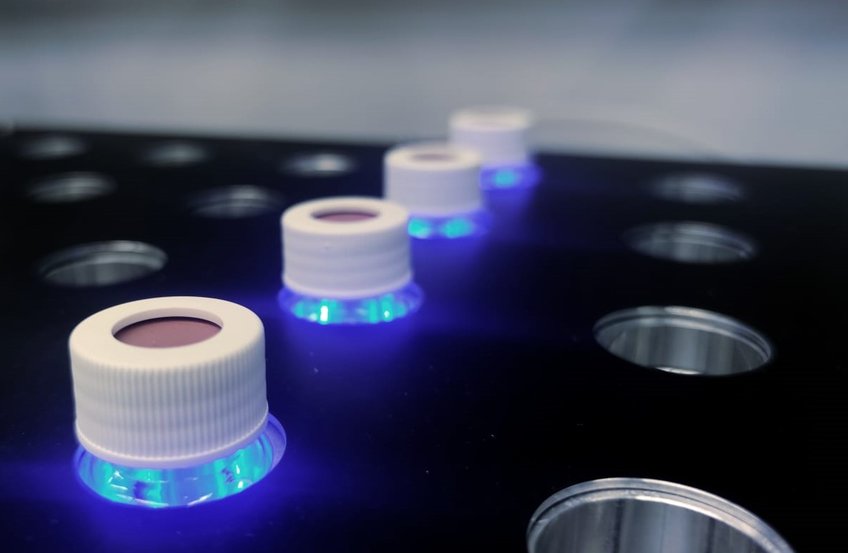
Light driven reactions
Photocatalysis has the potential to become a powerful organic synthesis tool. Sunlight is a renewable abundant energy resource that can be used for the formation of high value compounds. Increasingly, the utilization of this energy source has been targeted as a cleaner more environmentally friendly alternative to thermal energy. The emergence of photocatalytic materials has facilitated this shift. Typically, either homogenous small molecule photocatalysts or bulky heterogeneous photocatalytic materials are utilised. Small molecular photocatalysts are highly efficient but are poorly recyclable and reusable. Heterogeneous photocatalysts are readily recoverable and reusable, but are significantly less effective than homogenous analogues. Moreover, current photocatalytic materials cannot easily be functionalised and have limited reagent selectivity.
Recently we have reported a new class of polymer photocatalysts formed by combining small molecular photocatalysts with classical polymer chemistry. Creating photocatalytic polymers that contain the beneficial properties from both components. Small molecule photocatalysts will be modified to contain vinyl functionality, allowing copolymerisation with classical monomers, creating a photocatalytic polymer. Here, the material can be designed so that the active photocatalytic unit is fully solvated, ensuring high photocatalytic efficiency, similar to homogenous catalysts. While, the classical polymer support creates an easily recoverable material, analogous to heterogeneous photocatalysts.
This synergistic combination also enables the production of photocatalytic polymers that can be designed for specialised applications. In our group we are interested in using this new hybrid material to produce selective photocatalytic materials. Here, we use the tuneable nature of photocatalytic classical polymers to produce materials that can selectively catalyse targeted reactions. Using a bioinspired strategy we design the local environment of the photocatalytic moiety, controlling hydrophobicity, molecular recognition and geometry of the photocatalytic active portion.